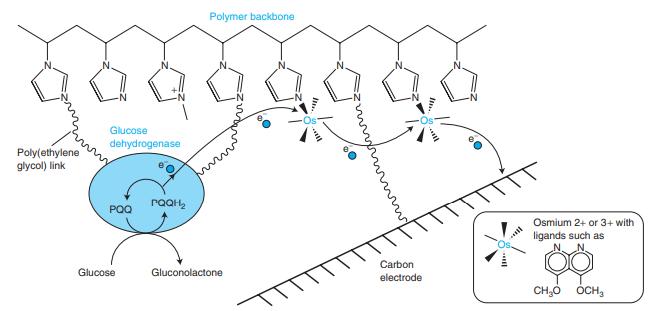(a) How does the amperometric glucose monitor in Figure 16-10 work? (b) Why is a mediator advantageous...
Question:
(a) How does the amperometric glucose monitor in Figure 16-10 work?
(b) Why is a mediator advantageous in the glucose monitor?
(c) How does the coulometric glucose monitor in Figure 16-12 work?
(d) Why does the signal in the amperometric measurement depend on the temperature of the blood sample, whereas the signal in coulometry is independent of temperature? Do you expect the signal to increase or decrease with increasing temperature in amperometry?
(e) Glucose (C6H6O12, FM 180.16) is present in normal human blood at a concentration near 1 g/L. How many microcoulombs are required for complete oxidation of glucose in 0.300 μL of blood in a home glucose monitor if the concentration is 1.00 g/L?
Figure 16-10

Figure 16-12

Fantastic news! We've Found the answer you've been seeking!
Step by Step Answer:
Related Book For 

Question Posted:





